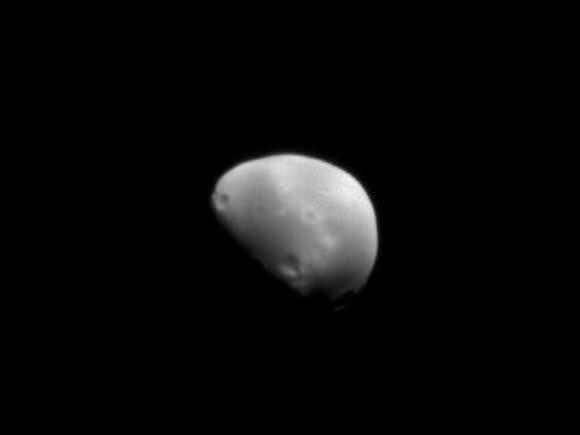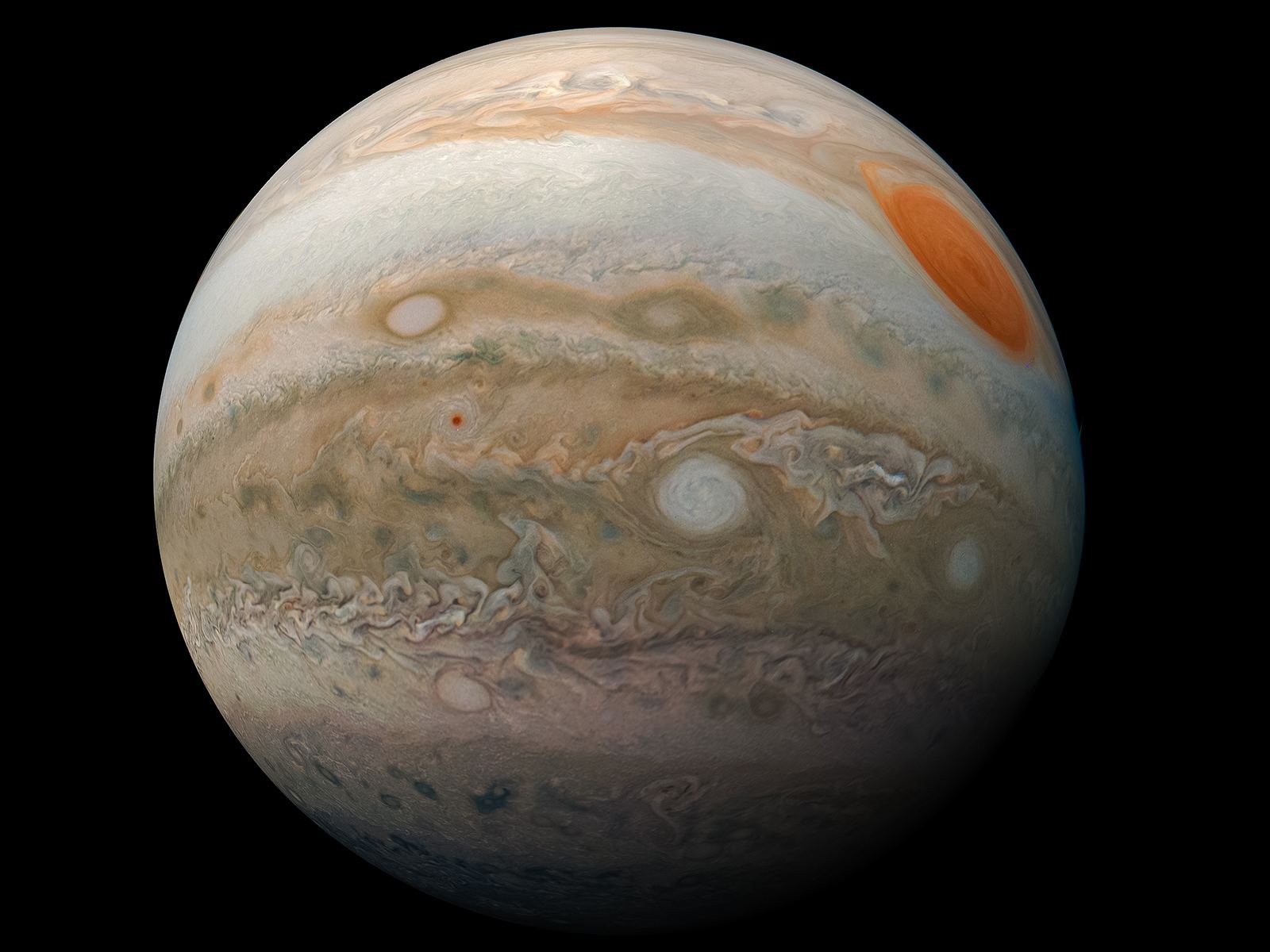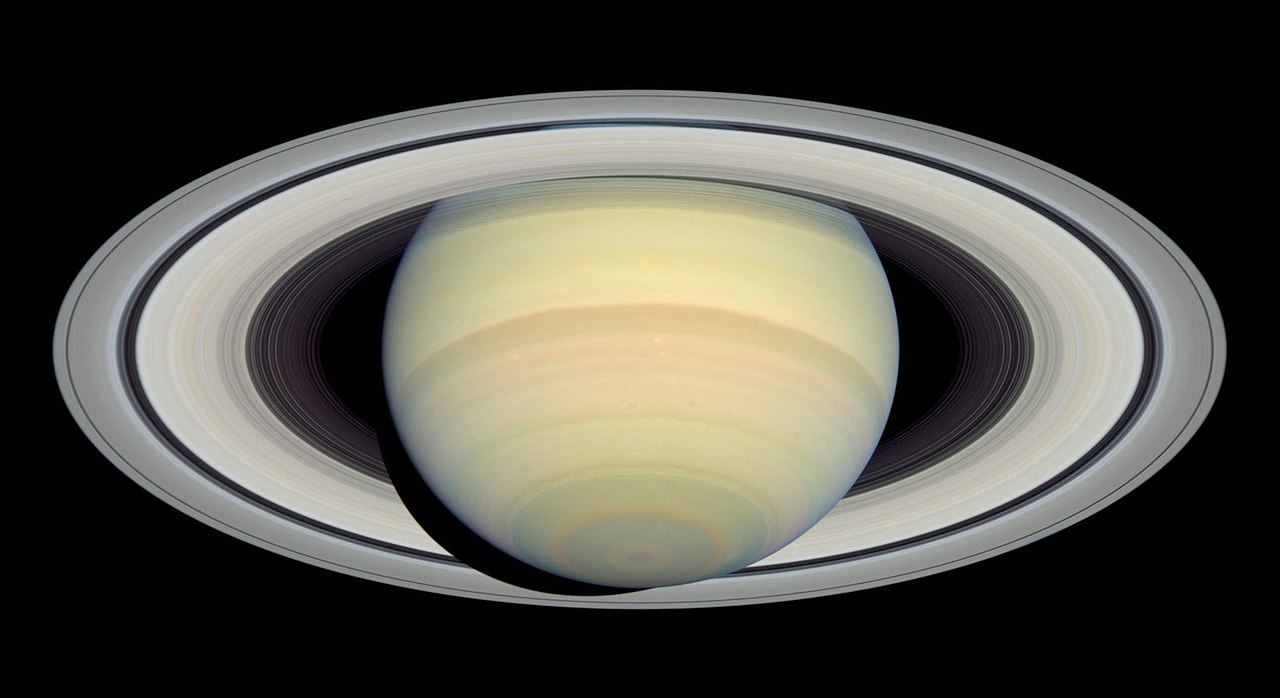Scouting mission locations in the outer solar system is complicated. It is difficult to know what you find before you get there with a probe, and once you’re already there, changing trajectories to look at the most exciting parts of the system is difficult. A much better option would be to map out the system in detail before the probe arrives. That is precisely what a team at the University of Leicester is doing in the expectation of the arrival of the JUICE and Europa Clipper probes to the Jupiter system.
Continue reading “New Views of Ganymede and Europa From Earth’s Most Powerful Telescope”Mars Express Watched Deimos Pass in Front of Jupiter and its Moons
That’s no moon … wait … yes, it is, and more!
ESA’s Mars Express has captured an unusual and rare occultation, all from its vantage point in orbit of Mars. The spacecraft’s orbit brought it to the right place where it could witness the moment Mars’ small moon Deimos passed in front of Jupiter and its four largest moons. Scientists say that celestial alignments like these enable a more precise determination of the Martian moons’ orbits.
Continue reading “Mars Express Watched Deimos Pass in Front of Jupiter and its Moons”Jupiter’s Atmosphere is Surprisingly Hot
Jupiter is a big planet, but it’s still a planet. That means it doesn’t heat itself through fancy mechanisms like nuclear fusion. Its interior is heated through its own weight, squeezing the interior through hydrostatic equilibrium, and its surface is heated mostly by the Sun. Since Jupiter only gets about 4% of the light per square meter that Earth gets, you’d expect its upper atmosphere to be pretty cold. Traditional models estimate it should be about -70 degrees Celsius. But recent measurements show the upper atmosphere is over 400 degrees Celsius, and in the polar regions as much as 700 degrees Celsius. In the words of Ruby Rhod from the movie The Fifth Element, “It’s Hot Hot Hot!”
Continue reading “Jupiter’s Atmosphere is Surprisingly Hot”A Fascinating Look at Jupiter's Clouds Where the Light Intensity is Converted Into 3D
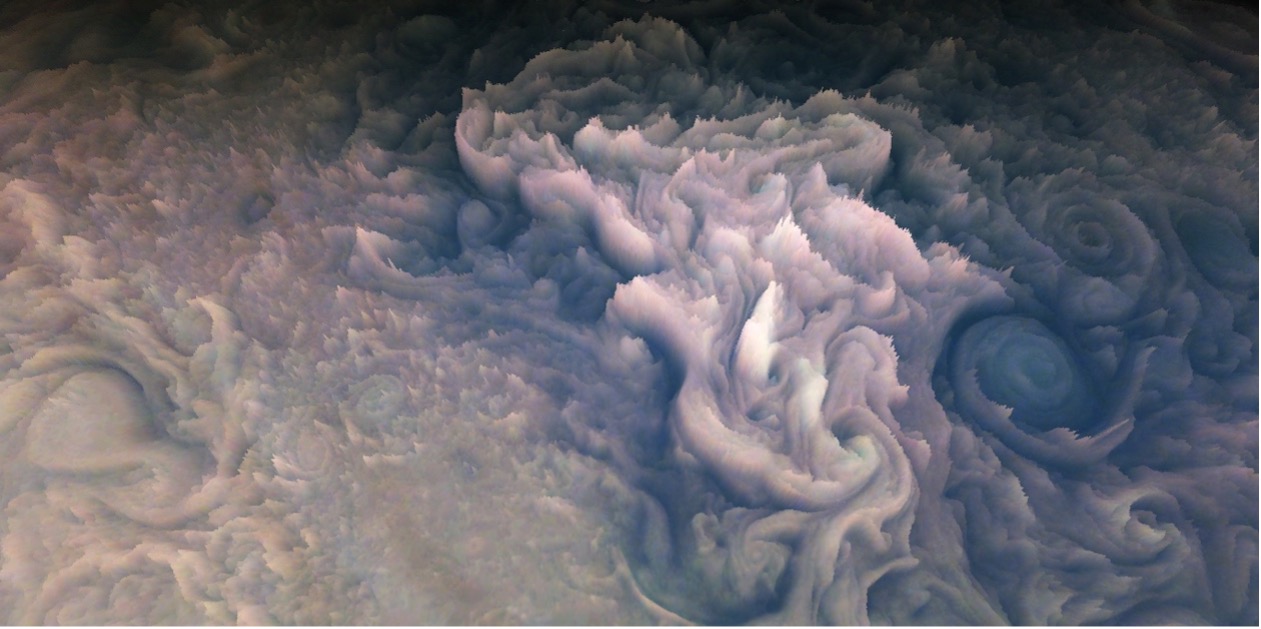
In July 2016, NASA’s Juno space probe reached Jupiter, becoming the second spacecraft in history to orbit the gas giant (the first being the Galileo probe that orbited Jupiter from 1995 to 2003). The data it has sent back has led to new revelations about the Jovian atmosphere, magnetosphere, gravitational field, structure, and composition. While its primary mission was intended to only last until 2018, a mission extension means that Juno will continue to orbit Jupiter’s poles (a perijove maneuver) and send back stunning images and data until 2025.
Recently, a team of citizen scientists led by mathematician and software developer Gerald Eichstädt used images taken by the probe’s visible-light camera/telescope (the JunoCam) to create a 3D animation of Jupiter’s upper atmosphere. Eichstädt’s animation was presented at the 2022 Europlanet Science Congress (EPSC), which took place from September 18 – 23 in Granada, and shows the relative heights of the cloud tops of Jupiter that reveal delicately textured swirls and peaks. Eichstädt’s work also showcased the potential for citizen science and public engagement with today’s missions.
Continue reading “A Fascinating Look at Jupiter's Clouds Where the Light Intensity is Converted Into 3D”Webb Telescope Sees Jupiter and Its Auroras in a New Light
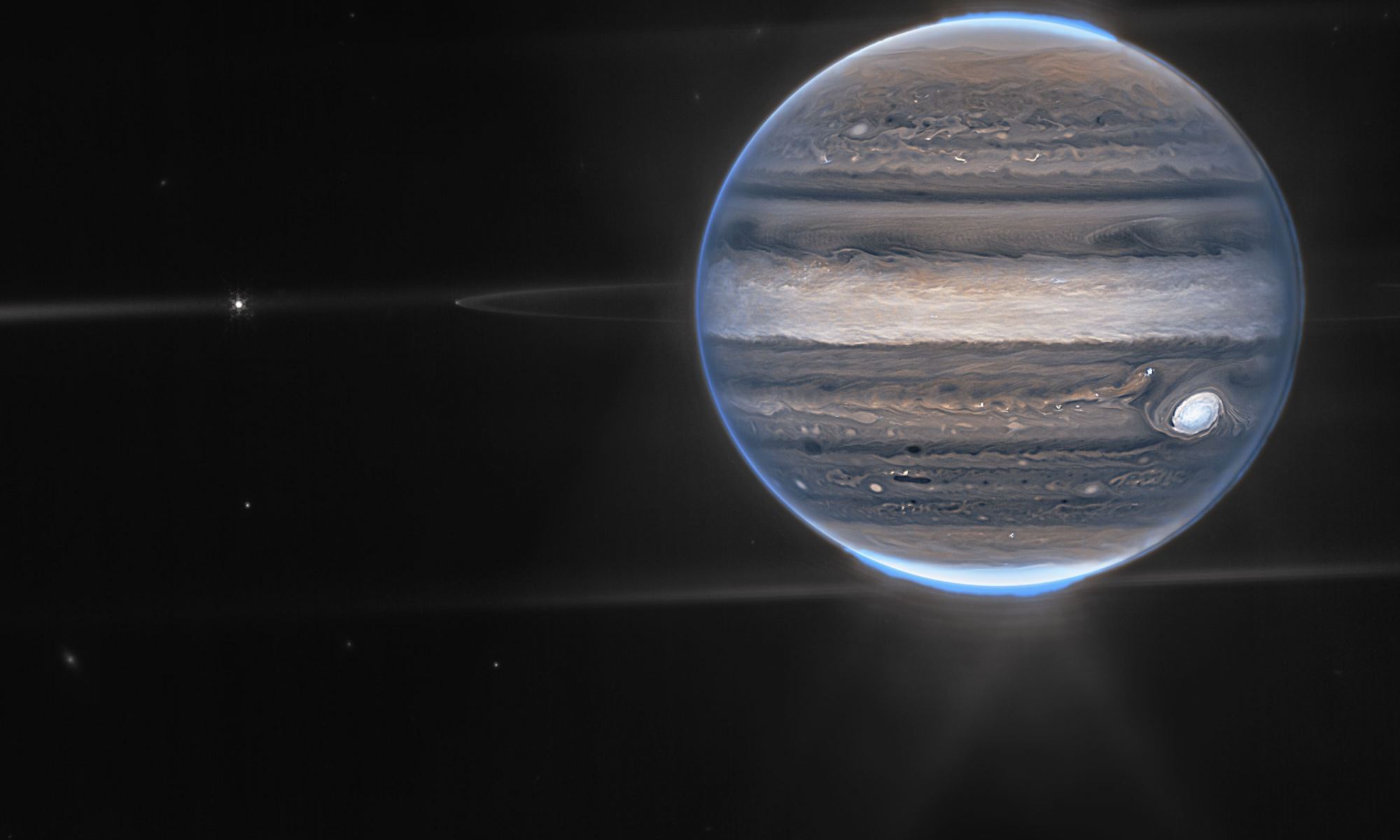
NASA’s James Webb Space Telescope is designed to probe the farthest frontiers of the universe, but newly released images of Jupiter prove that the observatory can also bring fresh perspectives to more familiar celestial sights.
The infrared images reveal Jupiter’s polar auroras and its faint rings as well as two of its moons — plus some galaxies in the far background. The planet’s Great Red Spot is there as well, but because it’s seen through three of JWST’s specialized filters, it looks white rather than red.
JWST’s new perspective should give scientists a better sense of how the complex Jupiter system is put together.
Continue reading “Webb Telescope Sees Jupiter and Its Auroras in a New Light”Jupiter Missions Could Also Help Search for Dark Matter
In a recent study published in the Journal of High Energy Physics, two researchers from Brown University demonstrated how data from past missions to Jupiter can help scientists examine dark matter, one of the most mysterious phenomena in the universe. The reason past Jupiter missions were chosen is due to the extensive amount of data gathered about the largest planet in the solar system, most notably from the Galileo and Juno orbiters. The elusive nature and composition of dark matter continues to elude scientists, both figuratively and literally, because it does not emit any light. So why do scientists continue to study this mysterious—and completely invisible—phenomena?
Continue reading “Jupiter Missions Could Also Help Search for Dark Matter”Jupiter's Giant Moons Prevent it From Having Rings Like Saturn
When the name Saturn is uttered, what comes to mind? For most people, the answer would probably be, “its fabulous system of rings.” There’s no doubt they are iconic, but what is perhaps lesser-known is that Jupiter, Uranus, and Neptune all have ring systems of their own. However, whereas Saturn’s rings are composed mainly of ice particles (making them highly reflective), Jupiter’s rings are composed mainly of dust grains. Meanwhile, Uranus and Neptune have rings of extremely dark particles known as tholins that are very hard to see. For this reason, none of the other gas giants get much recognition for their rings.
However, the question of why Jupiter doesn’t have larger, more spectacular rings than Saturn has been bothering astronomers for quite some time. As the larger and more massive of the two bodies, Jupiter should have rings that would dwarf Saturn’s by comparison. This mystery may have finally been resolved thanks to new research by a team from UC Riverside. According to their study, Jupiter’s massive moons (aka. Jupiter’s Galilean Moons) prevented it from developing a big, bright, beautiful ring system that would put Saturn’s to shame.
Continue reading “Jupiter's Giant Moons Prevent it From Having Rings Like Saturn”JWST Also Looked Inside the Solar System, at Jupiter and its Moons

After the ‘big reveal’ earlier this week of the James Webb Space Telescope’s first full color images and spectra of the universe, the science team has now released data from closer to home. One stunning shot includes Jupiter and its moons, and there are also data from several asteroids. These latest data are actually just engineering images, designed to test JWST’s ability to track solar system targets, as well as test out how the team can produce images from the data. The quality and detail in these test images have excited the mission scientists.
Continue reading “JWST Also Looked Inside the Solar System, at Jupiter and its Moons”Jupiter is up to 9% Rock and Metal, Which Means it Ate a lot of Planets in its Youth

Jupiter is composed almost entirely of hydrogen and helium. The amounts of each closely conform to the theoretical quantities in the primordial solar nebula. But it also contains other heavier elements, which astronomers call metals. Even though metals are a small component of Jupiter, their presence and distribution tell astronomers a lot.
According to a new study, Jupiter’s metal content and distribution mean that the planet ate a lot of rocky planetesimals in its youth.
Continue reading “Jupiter is up to 9% Rock and Metal, Which Means it Ate a lot of Planets in its Youth”Juno’s Entire 42nd Flight Past Jupiter in One Amazing Mosaic

On May 23, 2022, the Juno spacecraft made another close pass of Jupiter, with its suite of scientific instruments collecting data and its JunoCam visible light camera snapping photos all the while. This close pass, called a perijove, is the 42nd time the spacecraft has swung past Jupiter since Juno’s arrival in 2016.
Continue reading “Juno’s Entire 42nd Flight Past Jupiter in One Amazing Mosaic”

